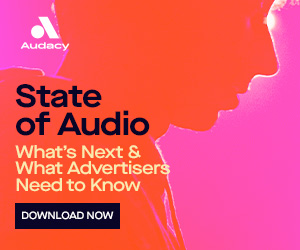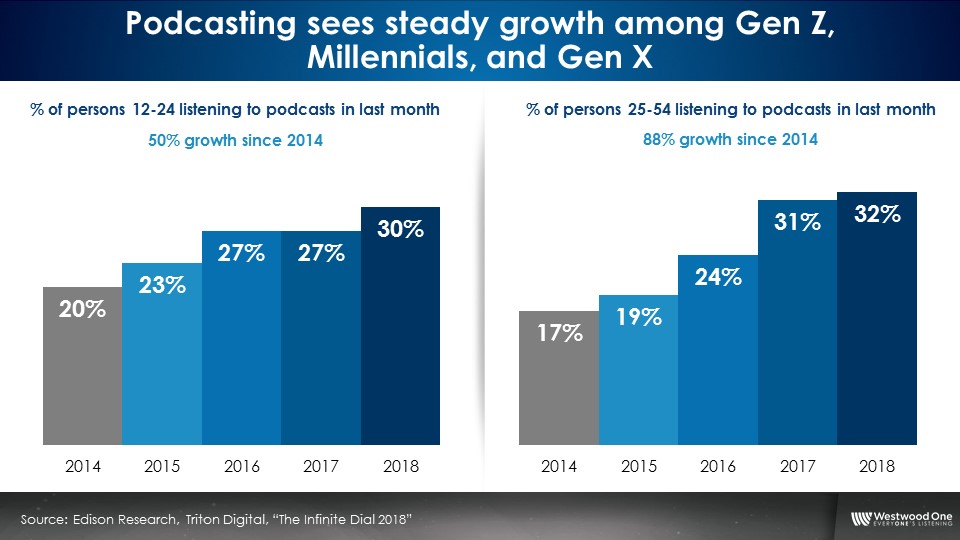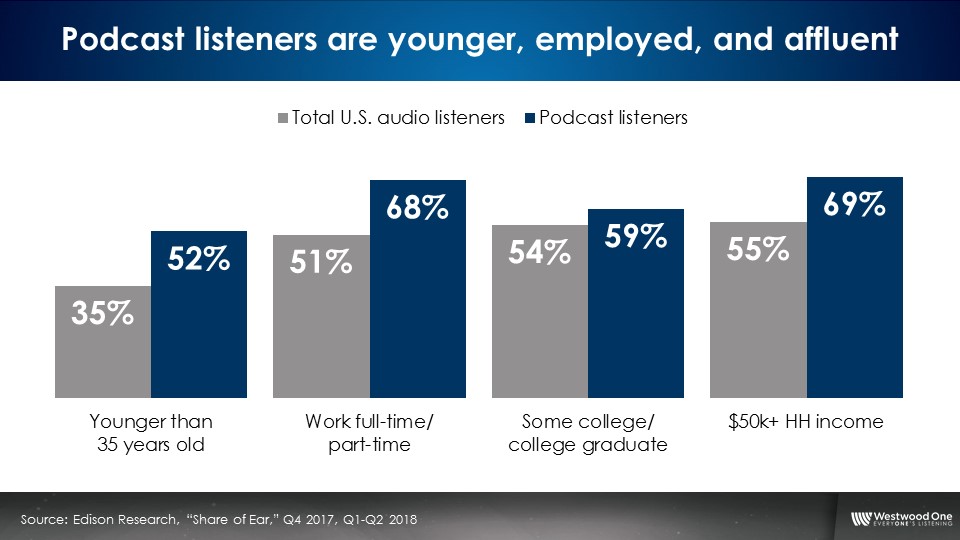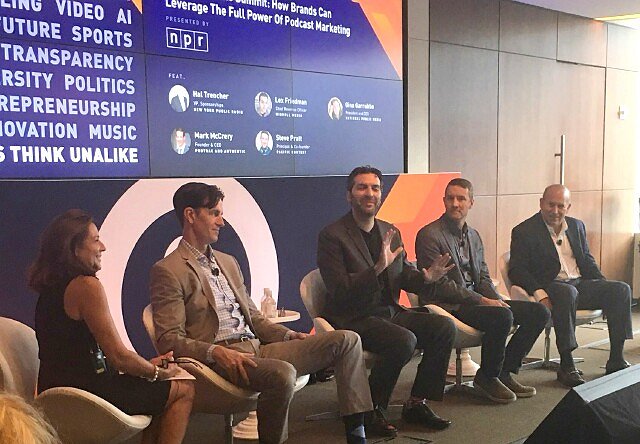There has never been a better time for audio, especially integrated audio that incorporates over-the-air radio, digital audio and podcasts. Audacy has just released their State of Audio e-book that details integrated audio's power to track, reach and engage consumers that is backed up by advanced and cutting-edge research and data.
According to the book, Audio has the capacity to, "stir emotions like no other medium." It goes on to explain that "via podcasts, sports, news or music, the auditory-neuro sensory embrace draws us in, makes us feel --really feel! -- and drives us to action. Personal audio (the kind we enjoy alone through our earbuds, smart speakers and talkable tech) is a bigger part of our daily lives than ever before."
The result is increased usage by listeners and increased ad spend by advertisers.
The New Normal
The pandemic has changed the way consumers use media, leading to a new normal and boon for audio. According to the research, there was substantial year-to-year growth in listening at home (+44%), via smart speakers (+43%) and via podcasts (+26%). At the same time, screen fatigue became a stress factor as both work and school locked consumers in front of their various screens. Audio with its mobile fluidity offers consumers the opportunity to de-stress, "and, even briefly, shut out the outside world … Audio just puts us in a good mood," the e-book notes.
The research and data bears this out. When compared to screens, audio listeners pay more attention, spending more time with audio than social media (+60%), broadcast TV (+54%), cable TV (+49%) and video streaming (+42%).
"In a world where screen time has reached a new and sometimes uncomfortable peak, it's the ears, not the eyes that have always connected most deeply," explained J.D. Crowley, Chief Digital Officer, Audacy. "It's the ears that are generating the most excitement and energy in media today."

The Opportunity for Advertisers
At the core of audio's benefits for advertisers are trust and immersion. The State of Audio guide explains that "Audiences trust the messages they hear from the voices they know. Host endorsements, whether live reads or as part of an ad, drive listeners to buy. A lot." Immersion is a blend of attention and emotional connection. Audio delivers on this behavior with the highest immersion index of any media -- whether AVOD, digital video, linear TV or social media.
Perhaps the most profound and valuable aspect of audio for advertisers is its ability to be accessed anywhere and at any time from a range of sources. Whether cleaning the house, walking the dog, driving the car or shopping, audio is everywhere. The study revealed a resurgence of radio listening in the home, facilitated by the new and growing technology of smart speakers, Bluetooth speakers and wireless headphones that makes it far more mobile than ever before.
The Audio Trifecta
The research revealed that all three audio platforms deliver for advertisers. The overall strength of broadcast radio (which commands an audience at least twice the size of pure-play services), along with the impressive growth of podcasting, especially among younger listeners (83% of whom say their favorite podcasters feel like friends), as well as innovative digital audio (which offers customized experiences), has engendered greater enthusiasm for audio content and, by extension, advertising messages.
Advertisers can take advantage of these attributes in a variety of ways. "Brands are embracing the speaker-as-touchpoint phenomenon, adding voice-triggered ads to their audio campaigns. That paves the way for some amazing new opportunities with shoppable audio interactions."
In addition, advertisers can access the power of audio influencers who can deeply engage their listeners. Audio campaigns have been proven to increase lift in sales conversions (+68%), lift in web visitation (+44%) and lift in in-store visitations (+45%).
Getting Started in Audio
While the opportunity is there for advertisers across audio platforms, it is equally important to have compelling creative and optimized audience targeting. According to the e-book, creative needs to drive recall, intent, engagement and emotional response -- and ad placement needs to occur at the right moment, in the right content for the right audience.
To that end, Audacy offers insights into producing the most compelling creative and accessing over 16,000 attributes to profile listeners and create custom audience segments for advertisers. It also offers a range of measurement opportunities including trackable pixel-based measurement. And depending on the KPI, Audacy offers measurement on foot traffic, brick-and-mortar visits with geofencing, web conversion, sales conversion, brand lift, app downloads and ad-to-app conversions and downloads in near real-time.
 LEARN MORE
LEARN MOREAudacy's e-book offers a step-by-step guide that provides insight into the power and value of each audio platform, the most impactful way to develop and launch the ad message, and the best ways to measure campaign impact through first party data.
Ken Lagana, Audacy's EVP, Digital Sales and Strategy, believes "Audio is the most engaging impression you can buy in media. Period. People are more receptive to receiving a message from someone they know and someone they trust. Only Audio can build these kinds of relationships."
DOWNLOAD the complete State of Audio guide.




